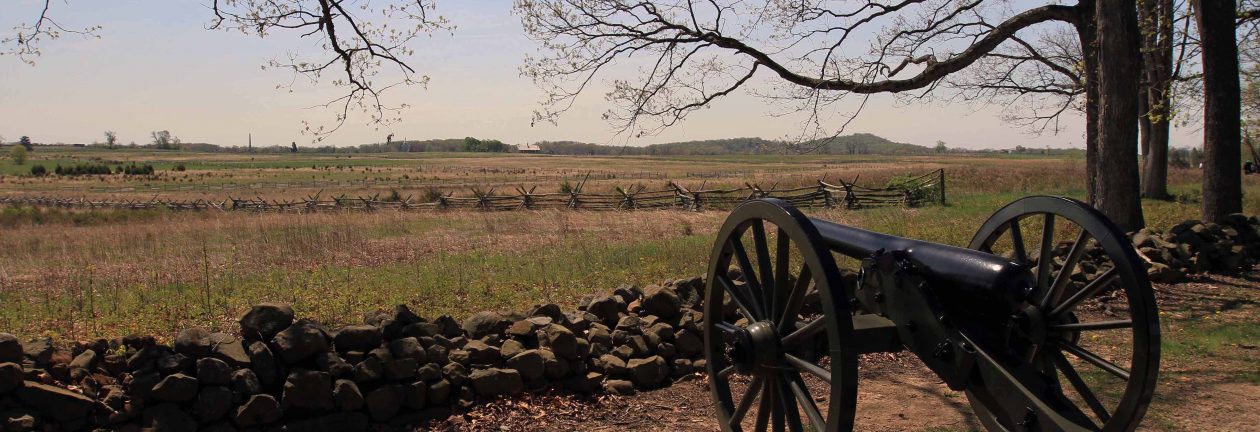Hospet, India
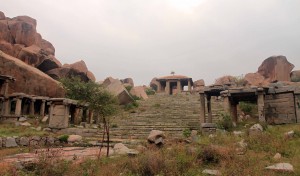
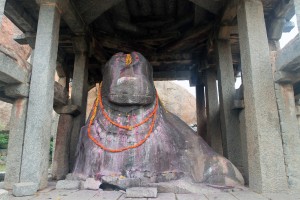
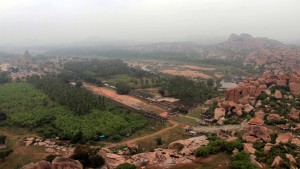
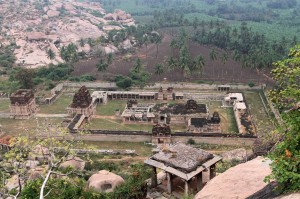
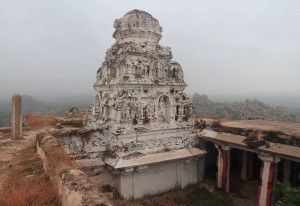
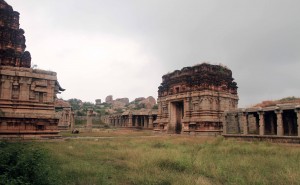
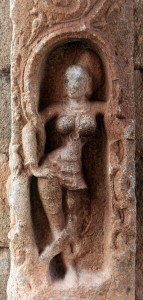
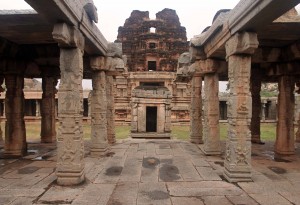
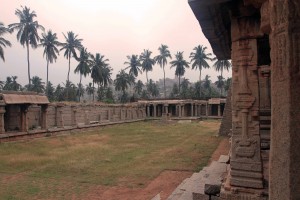
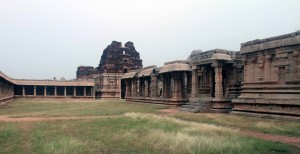
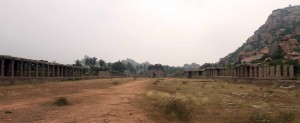
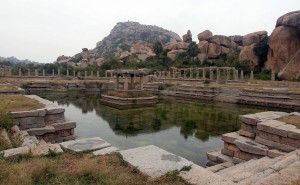
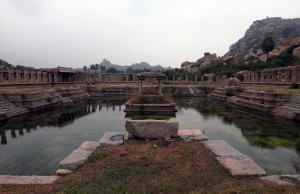
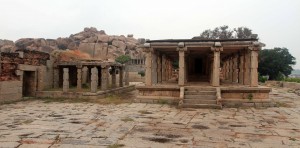
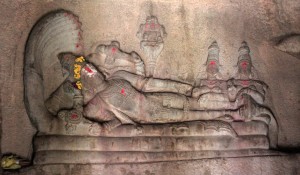
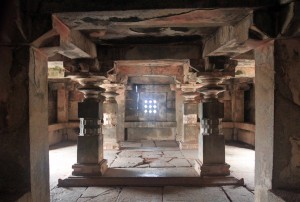
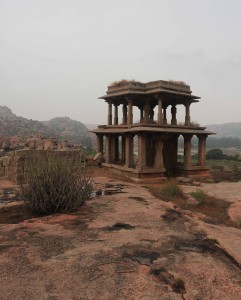
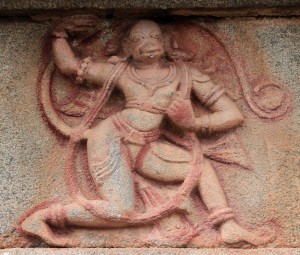
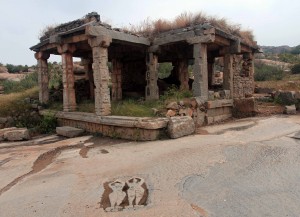
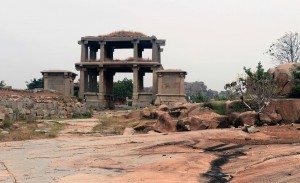
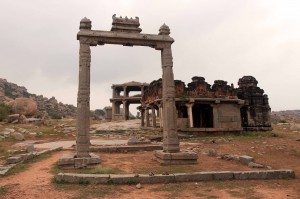
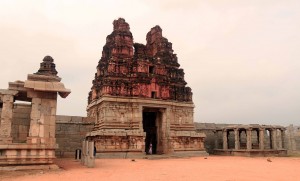
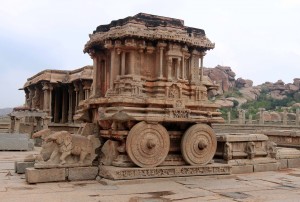
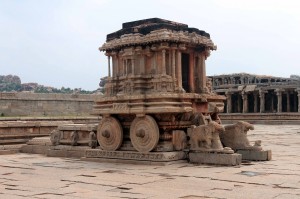
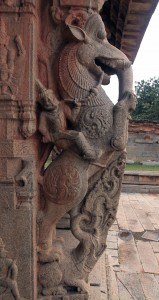
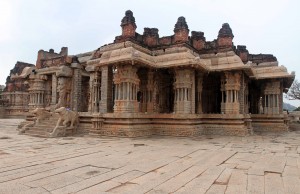
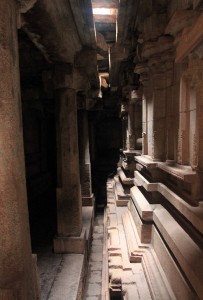
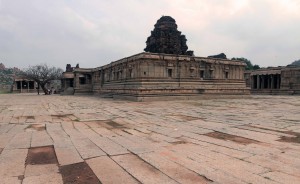

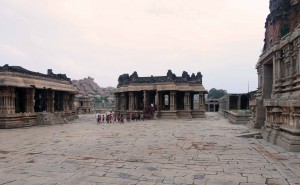
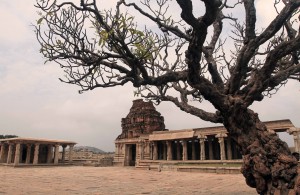
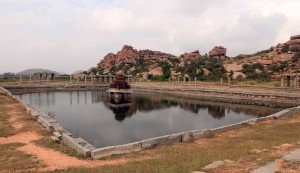
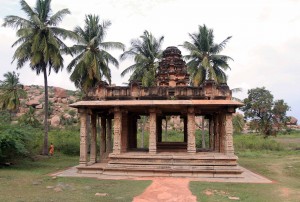
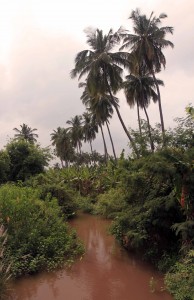
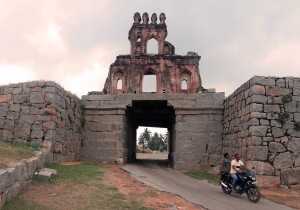
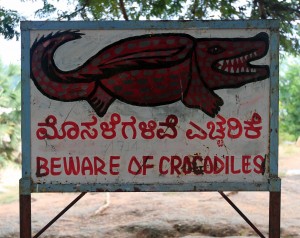
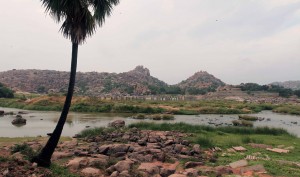
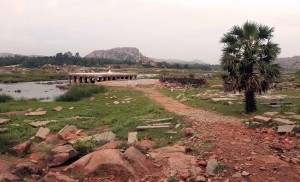
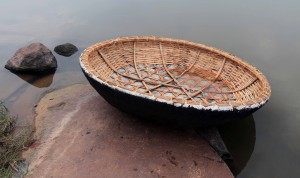
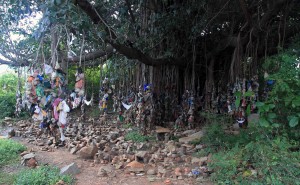
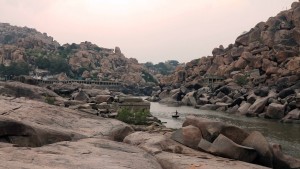
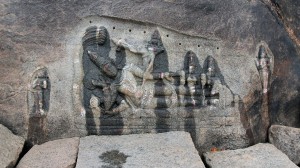
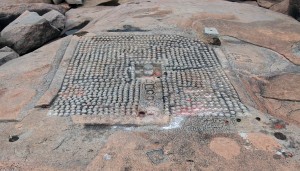
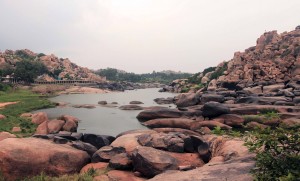
I woke up at 07:40 today, showered, dressed, got ready, grabbed my tripod, camera, and umbrella (the weather didn’t look so good this morning), and then walked to the Bus Station. I caught the next bus to the Hampi Bus Stand (twelve kilometers away from Hospet) and upon reaching Hampi, I walked eastward through the Hampi Bazaar and up to the Monolithic Bull (a large bull sculpted out of boulder); I then walked past some ruins of shrines and temples, up to the top of Matunga Hill; the trail up to the Veerabhadra temple on top of the hill was a tad slippery from recent rain fall and centuries of pilgrims’ feet wearing down the granite pathway. I eventually, safely, reached the top and was given a great view of the surrounding area – the piles of granite boulders, coconut palms, banana trees, temple ruins, and the Thungabgadra River in the distance. After enjoying the hilltop view, I walked down another path on the south side of the hill, which led to rows of banana trees; I then followed a mud path through the jungle to reach Achyutaraya temple; I came up on the south side and walked around the complex before reaching the entrance on the north side; I then explored the temple grounds before exiting out on to “Courtesan’s Street” north of the temple complex; next, I walked to a Pushkarani (a water tank with a pavilion in the center) before continuing on to the Varaha (Saiva) temple and the Rangatha temple. I then left the normal foot path and walked along a granite slope to explore several shrines and temples, still standing in defiance of time. I continued on to the two-storeyed gateway and the Tulabhara (“King’s Balance”), and then visited the Vittalia temple – a superb example of Vijayanagara architecture and the temple is dedicated to the Krishna aspect of Vishnu; the temple was built under the patronage of Devaraya II in the fifteenth-century AD (although substantial portions of the present structure were added in the sixteenth-century AD, under the reign of Krishnadevaraya); besides the main temple in the center, there is a marriage hall (“Kalyana Mantapa”), a festival hall (“Utsava Mantapa”), and Devi shrines; the most impressive sculpted piece inside the Vittalia temple (also the most famous) is the Stone Chariot (“Garuda Mandapa”), a sculpted reproduction of a processional wooden chariot that houses an image of Garuda (the vehicle of Vishnu). I walked around the temple grounds, explored the inner sanctum and the surrounding corridor (which had sunlight sipping through cracks in the ceiling, so not too dark), and took many pictures . . . and posed for many pictures (for a class of students). I then exited the temple and walked eastward through the remnants of a bazaar, visiting another Pushkarani (a nice water tank with a partially submerged central pavilion, the Kuduregombe Mantapa. I continued on the path and eventually reached the Gejjala Mandapa (located next to a parking lot, freshly planted banana plantation, and the burnt remnants of a sugar cane crop) and finally the Talanrigatta Gate (not very impressive nor worth the walk); I then turned around and walked back the way I came. Along my journey backwards, I visited the Brahma Vittala temple (a work in progress with many pieces still marked to assist in reconstruction) and many of the surrounding ruins (some with Kama Sutra art) near the Vittala temple. I then walked near the shore of the Thungabgadra River and visited the Sri Purandaradasara Mantapa, inspected a round boat (looks like a bowl and is made from weaved reeds, covered with sack-cloth, and coated in tar to make it impermeable), observed ruins of an ancient bridge, climbed along boulders and looked at many sculpted reliefs of dieties, lingas, and yonis (there were two depictions of grouped lingas, one with 180 lingas and the other with 1,001 – or so I was told by two other tourists who may or may not have counted all of them), and eventually made it to “Kampa Bhupa’s Path”; at this point thunder gave way to lightning and I quickly hurried off of the open granite boulders I was walking on; as I made my way back to the Hampi Bus Stand, it began to pour; so I pulled out my umbrella (“Be Prepared”) and continued onward, climbing aboard the next departing bus to Hospet. On the ride back to Hospet, I noticed many portions of the road were already flooded despite – what seemed like – not a whole lot of rain (I would hate to see this place in the middle of a monsoon). Finally, I reached the bus station in Hospet, walked to the restaurant I ate at two nights ago to buy some beer and water, and then walked back to my hotel room to relax and unwind, as well as to type some more journal entries. I then had dinner (vegetable Jaipuri, Bhindi Do Pyaza, Aloo Jeera, vegetable biryani, baby corn (Manchurian style), water, and a 7-Up) as well as some more beer (purchased at a nearby restaurant since the restaurant in the hotel I’m staying at has some moral objection to serving alcoholic beverages – bunch of crazies). I also watched a couple episodes of ‘Monk’ which I found entertaining and enjoyable (this is the first time I watched the show and I would be pleased to see more episodes in the future). I then went to sleep some time after 23:00.
